How to Fix iOS 18 Update Not Showing Up
If iOS 18 is not showing up on your iOS device, there could be an issue either with the Apple servers or with your device. Here we take a look at some of the fixes to resolve the iOS 18 not showing up issue and to successfully install the iOS update on your iPhone or iPad.
iOS Update Tips & Problems
Problems During iOS Update
AnyFix – Fix iOS Update Not Showing Easily
Free download AnyFix to fix the iOS 18 not showing up caused by system-related issues. Update your iPhone to the newest iOS 18 with ease. No technical skills are required. No data loss. Supports all iPhone models, including iPhone 16.
iOS 18 is released in mid-September and it introduces new features for a new lock screen, revamped notification center, and deeper focus mode integration. However, some users find iPhone updates not showing up on their devices. Their iPhone says up to date but isn’t.
If you are one of those, and you do not see the update being available on your device, you may wonder why iOS 18 update not showing and how to fix it. There are various reasons as to why you do not see the update on your iPhone or iPad and here we take a look at how you can fix iOS 18 not showing up on your devices.
Why Is iOS 18 Not Showing Up
The first reason why iOS 18 not showing up is that your iPhone doesn’t support updating to iOS 18. As we all know, each new iOS version will give up supporting some old-style iPhones when it’s released. You can check if your iPhone is available to update iOS 18 in the following.
iOS 18 support iPhone models:
iPhone 16, iPhone 16 Plus, iPhone 16 Pro, iPhone 16 Pro Max, iPhone 15, iPhone 15 Plus, iPhone 15 Pro, iPhone 15 Pro Max, iPhone 14, iPhone 14 Plus, iPhone 14 Pro, iPhone 14 Pro Max, iPhone 13, iPhone 13 mini, iPhone 13 Pro, iPhone 13 Pro Max, iPhone 12, iPhone 12 mini, iPhone 12 Pro, iPhone 12 Pro Max, iPhone 11, iPhone 11 Pro, iPhone 11 Pro Max, iPhone XS, iPhone XS Max, iPhone XR, iPhone SE (2nd generation or later)
If your iPhone is not one of the above models, your iPhone will not show iOS 18 update. And you may fail to use the latest iOS 18 on your iPhone. If your iPhone is supported to update to iOS 18, the possible reasons for iOS 18 not showing up can be the following:
- Apple server went down because millions of people update the iOS system at the same time.
- Some iPhone issues prevent you from receiving the software update.
- Other reasons like a poor network connection would also cause this problem.
Having known the causes for iOS 18 not showing up on iPhone, you can check the following 9 methods to fix iOS update not showing up according.
Further Reading: How to Stop an Update on iPhone and iPad >
9 Tips to Fix iOS 18 Not Showing Up
Here is how you fix iOS 18 not showing up on your iPhone/iPad using various ways.
1. Fix iOS 18 Not Showing Up in Clicks
AnyFix – iOS System Repair is a professional iOS system issue troubleshooter. No matter what kinds of scenarios you’re in, AnyFix can fix the problems on your iPhone and get it back to normal with a few clicks. Fixing the iOS update not showing up error is just a piece of cake for AnyFix.
Not just this error, AnyFix can fix over 150 iOS issues with ease. For instance, it can fix problems such as iPhone stuck on preparing update, iPhone stuck in Recovery mode, frozen screen, green line on the screen, iPhone stuck on the Apple logo, etc. Besides, We highly recommend you update your iOS device via this tool which can bring your iOS device to the newest version even if you can’t see the update on your phone.
Some important features you may be interested in of AnyFix are listed below.
AnyFix – Fix iOS Update Not Showing
- Fix iOS 18 not showing up with simple clicks.
- Support to downgrade or update the iOS system without effort.
- Provide a 1-click solution to get rid of system issues for iPhone/iPad.
- It also can fix 200+ iTunes errors without any data loss.
Free Download100% Clean & Safe
Free Download100% Clean & Safe
Free Download * 100% Clean & Safe
The following steps will show you the tutorial to fix the iOS update not showing up the problem.
Step 1. Download AnyFix – iOS System Recovery and run it on your computer> connect your iPhone to the computer and then please choose the Upgrade/Downgrade iOS.
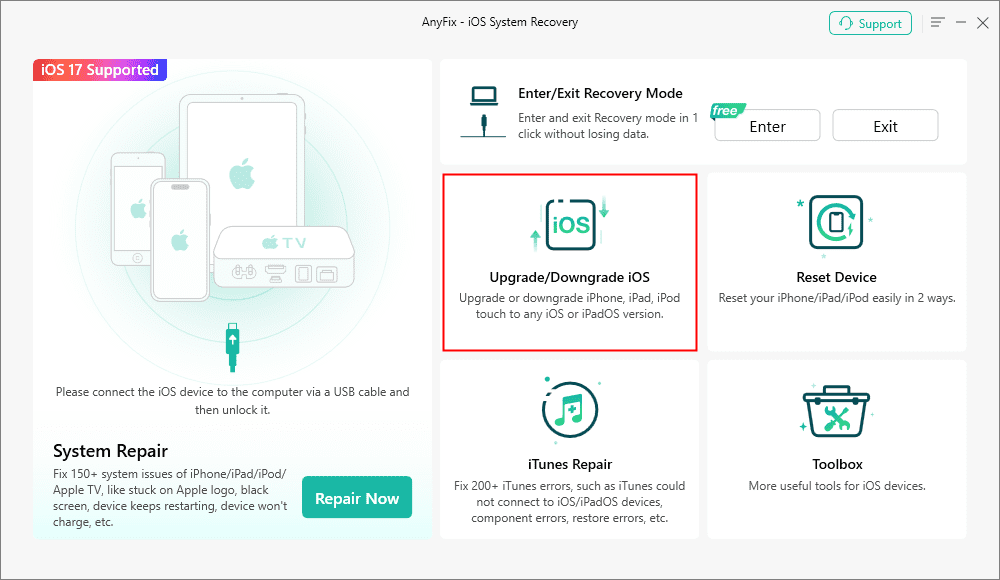
AnyFix Upgrade/Downgrade iOS Option
Step 2. Choose the 1 click to update iOS/iPadOS > Tap on Start Now to go on.
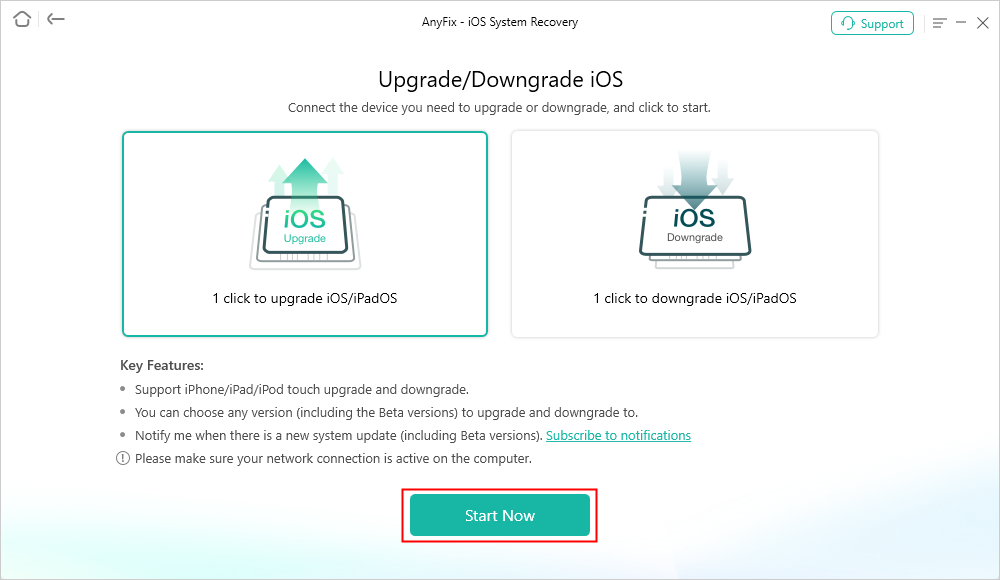
AnyFix Upgrade iOS
Step 3. Choose the suitable iOS system file to download > Click on the Upgrade to update the iPhone.
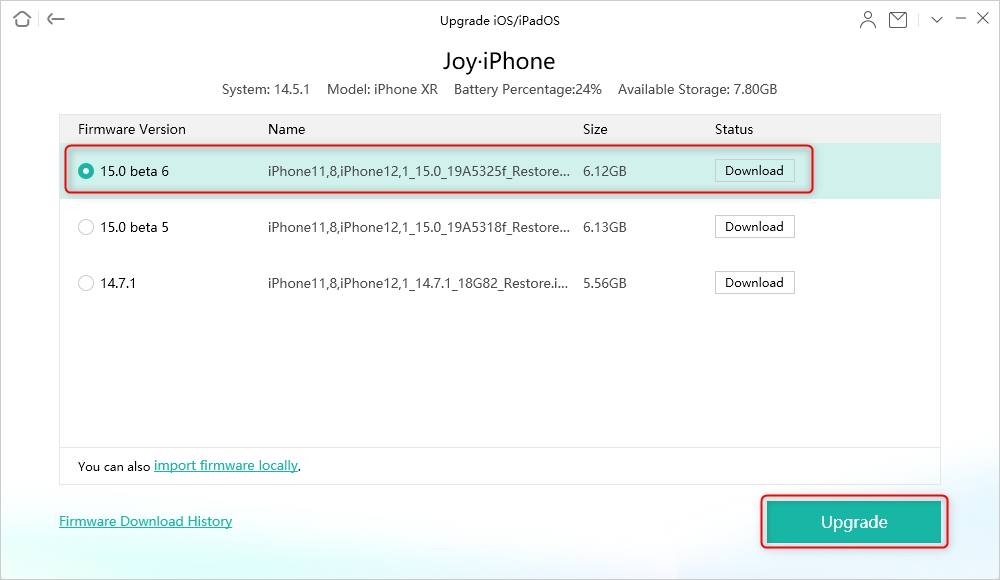
Choose an iOS Version to Upgrade to
Step 4. Minutes later, you can see this page on your computer screen.
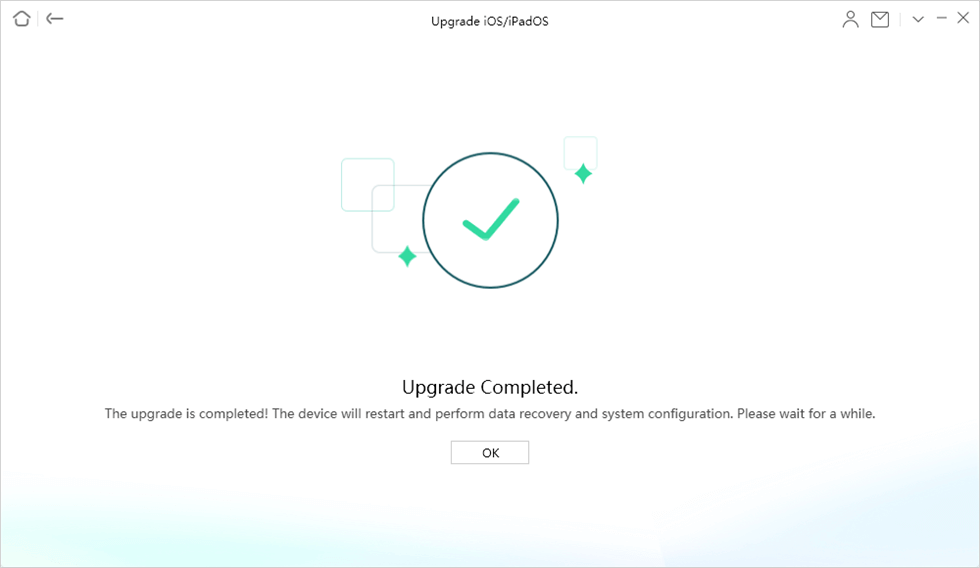
Upgrade Completed
2. Check the Compatibility of Your Device
While many users may have done this, some may have forgotten to do it. The first thing you need to do is check if your iOS device is compatible with the update you are trying to install. Not all the iPhone and iPad models are compatible with the newer versions of iOS.
If you have verified that your iOS device is indeed compatible with the latest version of iOS, then head on to the next fix in this guide.
3. Check for Update Manually
If you encounter the iOS 18 update not showing up on your iPhone automatically, you can also check for updates manually in the Settings. The steps are easy and just do as follows.
- Go to Settings on your iPhone > Tap on General > Then tap on Software Update.
- It will start to search and check updates and generally will show you the iOS 18 update > Tap on Download and Install.
4. Check the Uptime of the Apple Servers
As soon as Apple rolls out an iOS update, millions of people start downloading it right away. This causes overload on Apple servers and sometimes the servers go down due to the surge in traffic. So if you are faced with the iOS 18 not showing up issue, don’t forget to check the Apple servers.
The best way to verify if an Apple server is down is to head to the Apple status website and check the status for each server by yourself. If a server shows offline, it means it cannot serve you right now and you need to wait for Apple to bring it back up.
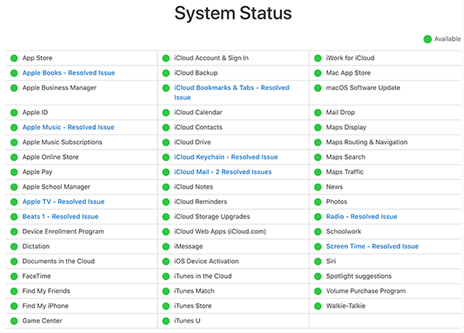
Verify if Apple servers are all up
5. Reboot Your iOS Device
If the Apple server for the iOS updates shows online, it could be you have a small technical glitch on your device. To fix it, all you need to do is reboot your iPhone or iPad as you would normally.
- Save the files you were working on. Then press and hold down the Power button to turn off your device.
- Use the same Power button to turn the device back on. You may then try updating your device to the latest iOS version.
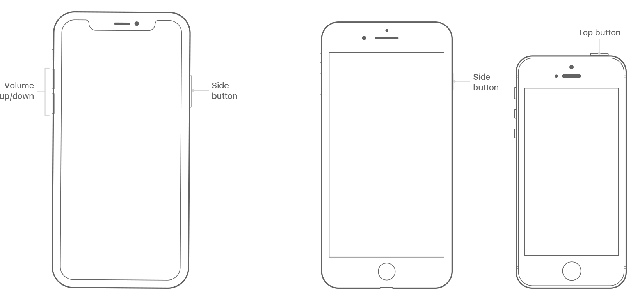
Restart your iPhone or iPad
You May Like: App Store Updates not Showing How to Fix >
6. Check Your Internet Connection
Since the iOS updates are downloaded from the Internet, you must make sure your Internet works. If your network is slow or unstable, you will experience difficulties downloading updates for your iOS device. Then, connect to another available WiFi network and try again. This will help you get the iOS updates without issues on your device.
7. Reset the Network Settings on Your Device
It may be that your Internet works fine but there are issues with the network configuration on your iOS device. If that is the case, you can reset the network settings to the factory defaults. This should resolve the iOS 18 not showing issue in most cases.
- On your iPhone or iPad, launch the Settings app and tap on General followed by Reset.
- Tap on Reset Network Settings on the following screen to reset your network settings.
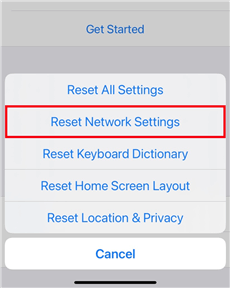
Select Reset Network Settings
Please notice that resetting the network settings means all the Wi-Fi passwords that have been saved in your device will be wiped out.
8. Remove the iOS Beta Profile from Your Device
The iOS beta version will also cause iOS updates not available. If you previously added an iOS beta profile to your device, you may want to get rid of it for the new iOS versions to show up on your device.
- To do so, head to Settings > General > Profile and tap on the iOS beta profile to delete it from your device.
- Once the profile is deleted, reboot your device and then attempt to update the iOS version from the Settings app.
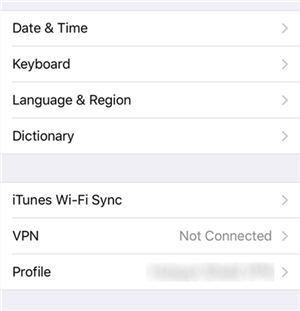
Remove Profiles from Your iOS Device
9. Use iTunes to Update the Device
If none of your attempts to update the iOS version were successful, it is time you let iTunes on Windows assist you with the job at hand.
iTunes also allows you to update your iOS-based devices from your computer. It works even though iOS 18 is not showing up on your device and the following steps show how.
On Windows
Step 1. Download and install the latest version of iTunes on your computer if you do not already have it.
Step 2. Connect your iPhone or iPad to your computer using a USB cable. Launch the iTunes app on your computer.
Step 3. Click on your device in the app, select the tab that says Summary, and then click on the Check for Update button.
iTunes will then give you the option to update your iPhone or iPad to the latest iOS.

Update to iOS with iTunes on Windows
On Mac
you can connect your iPhone to your Mac and go to Find > Location > [Your iPhone] > Check for Update > Download and Update your iPhone to iOS 18.
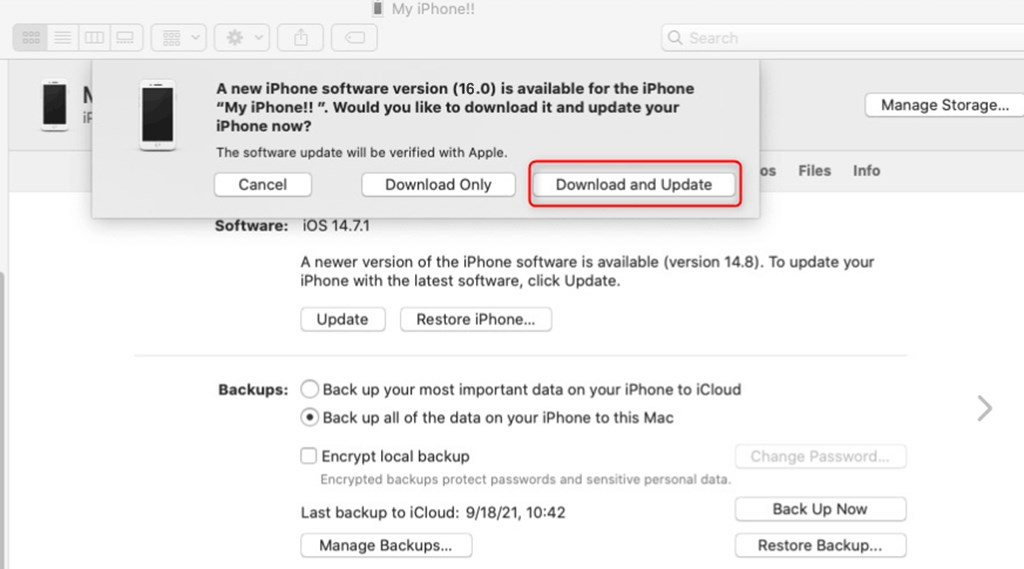
Update iOS with Finder
Also Read: How to Fix iPhone Unable to Check for Update >
The Bottom Line
If you are experiencing the iOS 18 not showing up issue on your device, there are a few things you can do to get the update to show up. Our guide above helps you with just that so you can run the latest version of iOS on your iPhone and iPad. We recommend you download AnyFix since it is a full-way iOS system fixer and can also help you update iOS in clicks.
Free Download * 100% Clean & Safe
Product-related questions? Contact Our Support Team to Get Quick Solution >

